by Ivan Jankovic (June 2024)
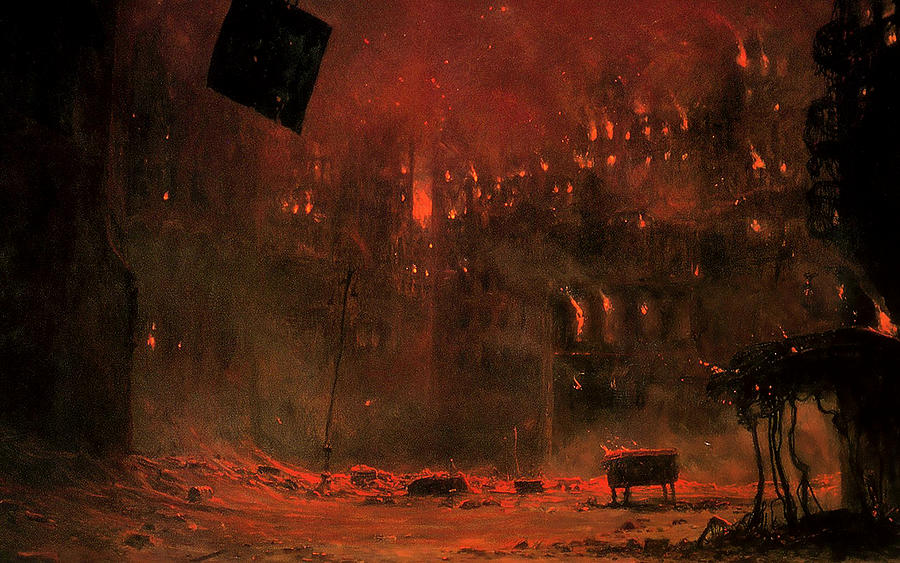
“I never saw Hitler so beside himself as when, as if in delirium, he was picturing to himself and to us the downfall of New York in towers of flame,” wrote Albert Speer, the Third Reich’s Minister of Armaments and War Production, in Spandau: The Secret Diaries. “He described the skyscrapers turning into huge burning torches and falling hither and thither, and the reflection of the disintegrating city in the dark sky.”
This vision seems remarkably like September 11, 2001. “The idea was for kamikaze pilots to fly explosives-crammed aircraft, lacking landing gear, into the Manhattan skyscrapers,” Speer continued. “The drawings for the Daimler-Benz Amerikabomber from spring 1944 actually exist. They show giant four-engine planes with raised underbellies, beneath which small bombers could be strapped. The bombers were to be released shortly before the plane reached the East Coast, after which the mother plane would return to Europe.”
Not only were the technical details of how to turn Manhattan skyscrapers into burning torches similar to Osama Bin Laden’s, but the motives were much the same. Bombing New York obviously provided no military advantage in World War II, nor in 2001, for radical Islamists. Rather, the attack was intended to be a part of a symbolic war against the supposed worldwide Jewish conspiracy, since in Hitler’s view, Wall Street was “the center of the international Jewry.”
Mohamed Atta, the chief 9/11 bomber, also considered New York City to be the center of world Jewry. In “Letter to the American People,” Bin Laden wrote: “In all its different forms and guises, the Jews have taken control of your economy, through which they have taken control of your media and now control of all aspects of your life, making you their servants and achieving their aims at your expense.”
It’s not a mere coincidence that Nazis and radical Islamists hate Jews to the point of extermination. The Nazis and their philosophy converted radicals such as Bin Laden into monstrous prophets for a new perverted form of Islam based on Western influences.

Most commentators explain 9/11 as a seminal point in a war against the West to destroy unbelievers based on a pure, ancient form of Islam. To explain how this produced an ideology of terror, Western analysts usually invoke the narrative of the Enlightenment and Reformation to explain both religious tolerance in the West and its total absence in the Islamic world. In short, because there has been no Enlightenment-Reformation there, religious and other forms of tolerance and moderation never developed.
The deeper point this analysis proposes is that the task of eradicating today’s Islamic fundamentalism and terrorism coincides with the task of modernizing Islam. When Islam gets its Enlightenment-Reformation, radicalism will give way to liberty and tolerance.
Yet, Islamic jihadists kill believers and nonbelievers alike. In November 2017, for example, they attacked an old mosque in Northern Egypt, slaughtering more than 300 Muslims at prayer on the holy day of Friday. What kind of ancient “Islamic” tradition condones such atrocities? Traditional Islam clearly condemns sending boys and girls with explosives strapped to their waists to blow up themselves and civilians in a crowded space.
The view most Westerners have of Islamic radicalism is seriously misguided. Instead of being an impossible evocation of the mythical past, Islamic radicalism is thoroughly modern with heavy European influences. It emerged by amalgamating distorted Koranic foundations with Western totalitarianism of both fascist and communist varieties. This transformation of Islam included the idea of revolution promising worldly redemption, the concepts of violence and terror against innocents as legitimate tools of political salvation, suicidal martyrdom as a revolutionary means, and elevating the state to the level of supreme religious authority.
Modern Islamists are actually Islamic apostates, substituting European political religion and totalitarian violence for traditional, conservative Islamic faith.
Jihad & the New Religiosity
A vivid example of Islam’s Westernization is demonstrated in how fundamentalists perverted the doctrine of holy war or jihad. This was not always a key pillar of Islam and, in fact, almost forgotten in the 19th and early 20th centuries, as Islamic societies opened to the West, and many Islamic rulers tried to emulate the West’s positive social and political achievements.
Although traditional Islam is not a religion of terrorism, it has never been a “religion of peace” as often claimed. Islam has its share of conquests and wars, many of which were justified by Islamic rulers on religious grounds. As well, a very prominent meaning of jihad in the Middle Ages during the Crusades was war against the infidels. Yet, the theological imprint of jihad was always limited—and it was decreasing. By the 18th and early 19th centuries, jihad had almost disappeared from the public discourse. “The concept of jihad was almost completely absent from Islamic education before the foundation of the Muslim Brothers,” wrote Islamic scholar Abd al Fattah al-Awaisi.
The Muslim Brotherhood (or Brothers), founded by Hasan al-Banna in 1928, revived and radically reinterpreted jihad with a peculiar, totalitarian-fascist twist. The old Koranic language was infused with a modern view of political violence and love of death as a supreme “religious” virtue. This explosive reinvention fused militaristic virtues with contempt for the West’s commercialism—following the statist intellectual tradition that had developed in the West as a reaction against capitalism and industrialization.
This reaction took on apocalyptic dimensions in Occidentalism, defined by German philosopher Werner Sombart in 1915, as follows: The view that the ideas of the Renaissance, Reformation and French Revolution—together with capitalism and the Industrial revolution—destroyed the spiritual substance of the Western world; confined religion to the private sphere; imposed the virtues of merchants on all citizens; and eliminated all heroic, self-sacrificing ethical impulses in citizens. These effete tendencies contrasted sharply, in Sombart’s view, with German militaristic virtues, collectivist devotion and political discipline as the embodiment of spiritual authenticity.
To this, Ernst Juenger, a WWI veteran and public intellectual, added the divinization of death. War, he wrote, elevates life above the superficiality of the bourgeois existence and transforms it into a mystical experience. In his essay “Epistle to the Young,” al-Banna reconfigured jihad along Occidentalist lines as the “art of death.” Al-Banna’s position, according to his authoritative biographer Richard Mitchell, was: “The Qur’an has commanded people to love death more than life.” Al-Banna articulated his vision for the creation of the proper Muslim individual, family and society, rejecting individual freedom, nationalism and secularism. The ultimate goal was the resurrection of the ancient Islamic Empire, which he described via references to the Third Reich and Mussolini’s dream of resurrecting the Roman Empire.
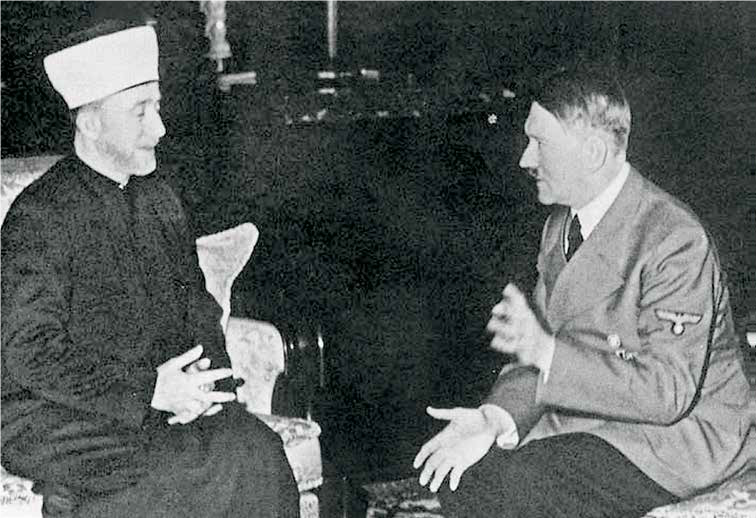
Al-Banna tried to portray the love of death as stemming from Koranic tenets and as an important spiritual device to redeem Muslims, wallowing in the swamp of Western materialism and moral corruption.
A paramilitary wing of the Muslim Brotherhood held Nazi-like marches through Cairo in the 1930s, chanting slogans mimicking WW II Japanese kamikaze pilots about sacrifice through suicidal death as national moral redemption: “We are afraid not of death, but we desire it … How wonderful death is … Let us die in redemption for Muslims.” Such attitudes closely correspond to how Bin Laden and Taliban extremists understood—and how Hamas terrorists today understand—the essence of Islam and the Koranic message.
The first suicide attack in the Middle East was carried out by the Red Army, a Japanese communist organization (again, adopting perverted Western ideology), which was an ideological partner of a Marxist group, the Popular Front for the Liberation of Palestine. In 1972, four Red Army members attacked tourists at Lod Airport (currently named Ben Gurion Airport) in Israel with hand grenades and machine guns, killing 48 people. The Red Army’s ideology blended the Bushido kamikaze justification of suicidal struggle with the Leninist idea of the legitimacy of terrorizing innocents for political purposes.
The only surviving attacker later accused Arabs of being cowards, lacking the revolutionary zeal to self-sacrifice. Muammar al-Gadafi (a Libyan military officer who engineered a coup in 1969 and then governed Libya until 2011) also contemptuously criticized Palestinian revolutionary organizations for failing to carry out similarly spectacular attacks.
Islamists were relative latecomers to this suicidal terrorism business: Not only was suicidal martyrdom imported from Japan, but the first domestic suicidal terrorists were members of a communist-nationalist organization, rather than of any religiously inspired group. It was only later that the same Leninist-kamikaze tactics were adopted by Islamic fundamentalists.
Jihad as Worldwide Revolution
Abul Ala al-Maududi, a top Pakistani ideologue of Islamic fundamentalism, expanded al-Banna’s definition of jihad to encompass a worldwide social revolution, transforming Islam into a global ideology, rather than a traditional religion. This new Islam, he wrote, seeks to “revolutionize the world social order” with Muslims as “an international revolutionary party organized under the ideology of Islam.” Jihad becomes a radical political revolution—really, a religious mutiny inside Islam—led by a vanguard of Islamic ideologues who are professional revolutionaries.
Sayyid Qutb, the radical follower of al-Banna and true founder of al-Quaeda, understood jihad very similarly to al-Maududi as a “permanent Islamic revolution” (one more concept borrowed directly from Western radical thought, namely from Leninism).
The first step in this revolution would be the victory of the Islamic “vanguard” of true believers in the Muslim world, and the next step involves a world revolution in which the entire globe is subjugated to Islamist rule. According to Vladimir Lenin—leader of the Bolshevik Revolution and founder of the Soviet Union—proletarians would not be able to carry out revolutionary action without the help of a vanguard of highly professional and morally incorruptible leaders, who would direct and control the unwashed masses in their emancipatory strivings. In the Stalinist reformulation of this idea, communist revolutionaries were depicted as “people of a special kind.” Qutb reserved the same role for his Islamic vanguard.
Muslim Brotherhood as a Totalitarian Organization
The influence of this Western “monstrous modernity,” as philosopher John Gray called it, on Islam reaches far beyond refashioning the traditional concept of jihad in conformity with the Western tradition of politicized violence. The second pillar of this modern revolution in the Islamic world is the influence of European secular totalitarian ideas on the activities and ideas of the Muslim Brotherhood of Egypt and its leader, al-Banna. This organization served as a vehicle for transplanting Western radical ideas, especially fascism and later communism.
It might seem a strange exaggeration to describe the Muslim Brotherhood as a fascist or totalitarian organization. How could a movement professing Islamic renewal and dedication to humanitarian and cultural work, with a strong religious component, be described as totalitarian or fascistic? In recent years, the Muslim Brotherhood was in power in Egypt and denounced political violence—but only nominally, while maintaining adherence to the radical Islamist notions.
Historically, fascism was not seen by many as a reactionary, racist tyranny but as a modern revolutionary movement advocating total care for the individual in exchange for control by the state. This was portrayed in massive propaganda efforts as inspired by the spirit of unity, brotherhood and solidarity. Fascism motivated many well-intentioned reformists seeking “social justice” to find some kind of secular redemption.
Instead of genocidal warmongers, Hitler and Mussolini were depicted (and revered), both by the Western and non-Western progressives, as strong leaders able to overcome the shortcomings of capitalism and decadent bourgeois democracy by resolute political action and mobilization of the masses to fight societal evils. American progressives saw Mussolini and Hitler in the same favorable light they saw President Franklin D Roosevelt. The very concept of a “totalitarian state” that today we associate with evil, tyrannical regimes was coined originally by Mussolini as a positive means of satisfying all economic and spiritual needs Mussolini’s famous formula for good government was: “Everything for the state, nothing outside the state, nothing above the state.”
Understandably in this context, al-Banna and the Muslim Brotherhood shared the same admiration for fascism’s collectivistic mobilization and political religiosity. As a part of this global ideological trend, the Brotherhood epitomized the progressive, revolutionary ethos in which collectivism was seen as the “wave of the future.”
Most of the cultural symbols and narratives used to give an “Islamic” patina to fascist, totalitarian ideas were forgeries. The first striking example was al-Banna’s interpretation of the Islamic religious concept of shura. Traditionally, shura referred to Muhammad’s practice of consultation with his companions about the important decisions. However, there is no authoritative interpretation of what shura should mean in the modern politics of a nation state. Jamal al-Din al-Afgani and Muhammad Abduh, early reformers and modernizers of Islam in the late 19th and early 20th centuries, invoked the concept of shura as a doctrinal justification for the parliamentary democratic system and liberal constitutionalism of the European kind.
In contrast, al-Banna interpreted shura to mean something similar to Mussolini’s idea of stato corporativo: the unified national council, consisting of the representatives of various social groups, that “overcomes” the limitations of parliamentary democracy. In al-Banna’s “The 50-Point Manifesto,” he offered a typical Mussolinian vision of a true democracy as: “An end to party rivalry, and a channeling of the political forces of the nation into a common front and a single phalanx A strengthening of the armed forces, and an increase in the number of youth groups; the inspiration of the latter with zeal on the basis of Islamic jihad. The surveillance of the personal conduct of all its employees, and an end to the dichotomy between the private and professional spheres.” The recycling of European fascist ideas is obvious here.
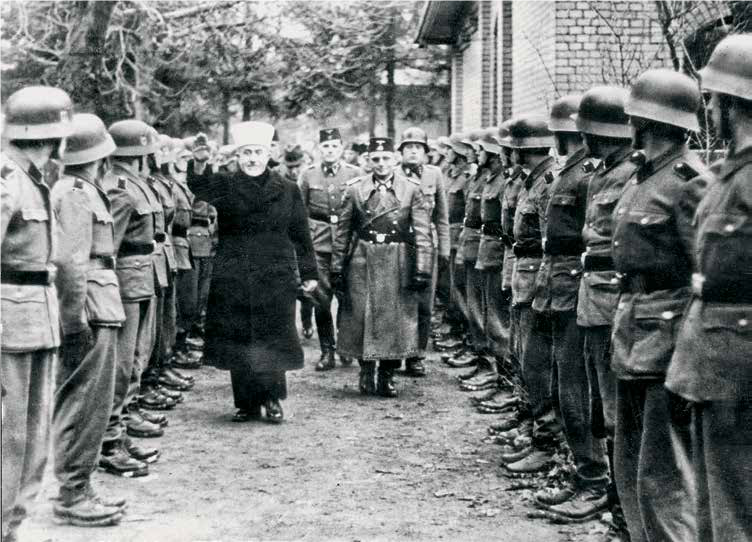
Under al-Banna’s chairmanship, the Muslim Brotherhood formed a secret paramilitary organization (numbering 40,000 in the 1940s) called al-jihaz al-sim (secret apparatus) and modeled after Mussolini’s black shirts. Their slogan, al-jihaz al-sin (action, obedience, silence) closely mimicked the slogan of Italian fascisti (believe, obey, fight). The purpose of the Brotherhood’s paramilitary was to execute the second phase of the revolution, which would include political takeover and creation of an Islamic government.
So, when today’s Islamists, such as the Muslim Brotherhood, say their “true” political tradition is pitted against rotten Western democracy, they are right. However, they are perfectly unaware that what they call “their” tradition is a second-hand Western ideology, derived from European fascism and socialism.
Al-Banna also interpreted the traditional concept of umma (community of Muslim believers) as shorthand for the worldwide Islamic totalitarian empire (caliphate), with the religious leader as head of state. That was a transfiguration of a religious symbol (spiritual unity of Muslim believers) into a totalitarian political ideologeme (fundamental ideological unit. In his essay “Peace in Islam,” al-Banna approvingly cited Hitler’s concept of the Third Reich and Mussolini’s idea of the renewal of the Roman Empire as solid approximations of umma. Still, he considered his concept of caliphate as theologically and ideologically superior. In the same essay, al-Banna expressed disappointment in the final achievements of fascism and Nazism, nevertheless stating: “Nazism came to power in Germany, Fascism in Italy, and both Hitler and Mussolini began to force their people to conform to what they thought: unity, order, development and power. Certainly, this system led the two countries to stability and a vital international role This cultivated much hope, reawakened aspiration and united the whole country under one leader.”
Sayid Qutb, the most radical and influential of al-Banna’s followers, also took traditional Koranic concepts and gave them completely new and distorted meanings borrowed from totalitarian European thought For example, he appropriated the concept of jahiliyya from the Koran, which traditionally referred to the state of ignorance of polytheistic Arabic tribes before Muhammad’s revelations, to mean something entirely different: the Occidentalist spiritual decadence of both Muslims and non-Muslims in the modern capitalist and individualistic society. In his view, everyone (except Qutb and his followers) was living in darkness, even though, like al-Banna, he followed historian Oswald Spengler, as well as Sombart and Juenger, in praising the achievements of Western science and technology despite spiritual decline Qutb objected that these achievements were misused to perpetuate unjust exploitation and Western imperialism.
Qutb developed this new concept of jahiliyya under the influence of the French social-Darwinist and eugenicist Alexis Carrel. Originally a medical doctor who won the Nobel Prize in medicine in 1912, “Carrel put himself forward as a social philosopher (if not, indeed, a prophet),” wrote L.C. Brown in Religion and State, “deploring the presumed dehumanizing impact of modern Western materialism (especially capitalism). A social Darwinist elitist, he went all the way into advocating eugenics and euthanasia to breed the best and weed out the unfit.”
Carrel is the most-cited source in Qutb’s book Milestones, apart from the Koran and Hadiths. Qutb imported Carrel’s theory of barbarism to describe modern Europe and adapted it for the Arab world to formulate “a Third World version of fascism,” according to Islamic scholar Youssef Choueiri Qutb’s jahiliyya is actually Carrel’s barbarism, slightly repackaged to suit Islamic religious symbolism.
For Carrel, Western barbaric materialism is a condition of disintegration of humanity’s spiritual and biological nature that must be healed by a radical therapy of eugenic control, performed by the priest-healers living in a “scientific Monastery.” Similarly, Qutb saw the fatal illness of Muslim civilization as jahiliyya, as a separation of religion and politics that must be overcome by an Islamic vanguard composed of agents of the future, true Islam, operating in a Carrelian “scientific Mosque.”
Accordingly, Carrel wrote about “the unification of all capabilities and their coordination to a single belief ” Qutb renamed this model the “Islamic method” that should unite science, religion, ethics, economics and education to produce a “divine uniqueness,” a replica of Carrel’s “super-science.”
Islamists & Economic Socialism
The extent of Islamic Westernization can be seen in how often the Muslim Brotherhood’s humanitarian work is hailed as socially progressive and, hence, irreconcilable with fascism However, the Nazi platform in the 1920s and ’30s included the same emphasis on free education, workers’ rights (even profit-sharing schemes), universal health care, old-age programs, community service and so on Once in power, the Nazis expanded social welfare programs to promote economic dependence on government.
Similarly, Egypt’s Muslim Brotherhood established a network of charities to help the poor, which contributed to their widespread popularity The Nazi Party mobilized youth by the thousands to help the elderly fix up their homes and assist in everyday activities Rather than a specifically “Muslim” Brotherhood, this emphasis on social welfare was an ideological feature of all European totalitarian movements.
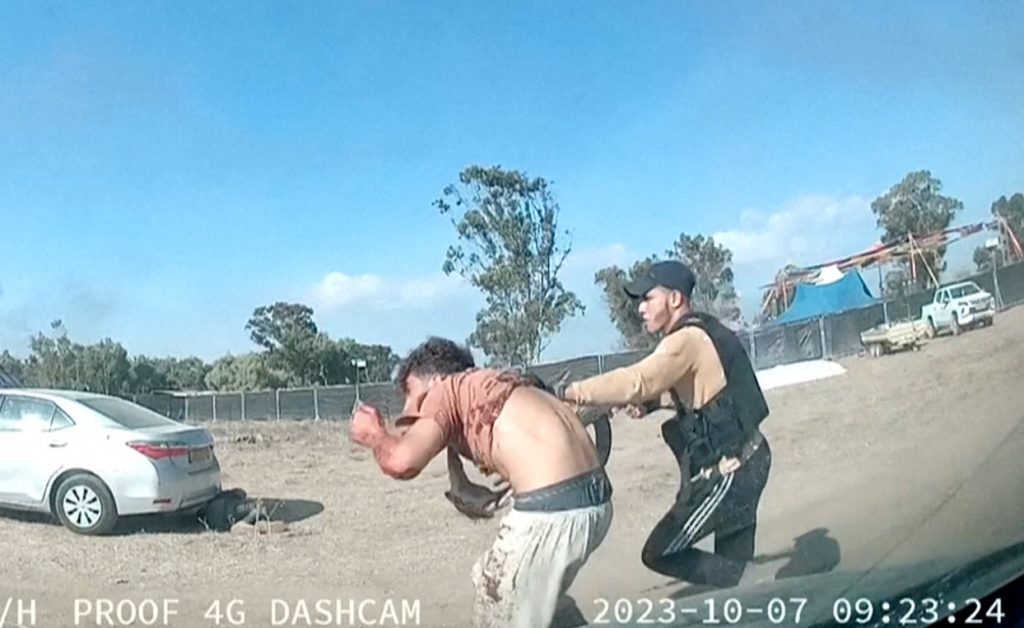
Following the fascist script, al Banna interpreted the traditional obligation of charity (zakat) as a license for the government not only to impose the welfare state but also strengthen the military. Qutb developed this into a full-blown Marxist-style theory of legitimate confiscation and redistribution of private property, replete with radical socialist terminology and argumentation. In The Battle of Islam with Capitalism, Qutb tried to explain how confiscation of private property accords with Islam.
But this marked a dramatic departure from the traditional Islamic understanding of shari’a (traditional Islamic law based on religious precepts) that requires a believer to pay zakath or charity as a voluntary contribution—not as a tax. In traditional shari’a, the only coercive transfer of wealth permitted is taxation in the case of war—not for social redistribution as Qutb proposed.
In Social Justice in Islam, Qutb further developed his theory of just ownership, adopting the Marxist and modern socialist conception of society as the state, which is the sole owner of all resources. The only change was deploying Islamic symbols and references as packaging. The following passage is a typical display of Qutbian Islamic communism:
The essence of the reality regarding the nature of private (individual) ownership (of wealth, property) in Islam is: (i) that the foundational principle is that the wealth belongs to the group (society) in its generality; (ii) that [the holding of] private property is simply a functional duty, which has conditions and restrictions; (iii) that some wealth is common and no one has any right to possess it, and everyone ought to be benefit from it communally; (iv) and a portion of it likewise is a right that is to be returned to the group (society) so that it (the society) can give it to specific factions within it, which are in need of it to rectify their condition and the condition of the society (in turn) along with it.
In this passage, Qutb mixes the standard Koranic view—that all the earth’s material blessing belong to God—with the Marxist theory of distribution, according to which all material wealth belongs to society, which has the right to confiscate and redistribute any portion of anyone’s possession and “give it to specific factions.” Here an important ideologue of so-called Islamic revival equated God with the state (society) explicitly, just as a radical Western socialist.
Qutb even redefined Islam as a combination of the best elements of Christianity and socialism: “And it is necessary for Islam to judge, since it is a unique, constructive and positivist aquidah (belief system), which has been molded and shaped from Christianity and communism together, with a blending in the most perfect of ways and which comprises all of their objectives and adds in addition to them harmony, balance and justice.”
Is it not strangely shocking that a very influential Islamist thinker considered “true Islam” to be merely a combination of Christianity and communism? In effect, Qutb treated Islam as counterfeit, rather than as revealed, absolute truth. Of course, this was necessary since Qutb wanted to remake Islam in the image of foreign and completely un-Islamic gods.
Eyes Wide Open
Western observers and policymakers should be mindful of the true Western influences that created contemporary Islamic radicalism, in order to properly understand and devise policies to deal with Islamic terrorism.
To date, unfortunately, most Westerners have misunderstood radical Islam as a revival of an original form of Islam, as Islamic “purism” or “literalism.” This is an extremely dangerous delusion. As this article demonstrates, the sources of terrorism’s ideology are foreign and, ironically, originated in the West—ironically again, the main (but not only) target of Islamic terror. It is these sources—primarily fascism and communism—that must be seen for what they are: perverse, criminal attempts at undermining Western Civilization in order to establish an oppressive, totalitarian police state. Beginning in the 1920s, these criminal plots spread beyond the confines of Western societies into the domains of “subjugated” peoples. In their thirst to destroy Western Civilization in the name of their “religious” tradition, radical Islamists are comically and tragically unaware of their intellectual slavery to the West’s worst political ideas.
As such, Westerners can find common ground with traditional and truly moderate Muslims in rejecting, not Western Civilization, but these distortions of Western ideas that history has shown to be destructive to the point of pure evil.
The Hamas terror campaign is the most recent illustration of the trends described in this article. Hamas’s political nihilism, cynicism and in-your-face genocidal intent counts on the inability of the West to even comprehend, let alone accept as reality, what they see. Hamas amalgamates absolute, morally unconstrained terrorism with a Nazi-style eliminationist antisemitism. There is very little in Hamas’s actions and pronouncements that departs from the Nazi ideology. Unlike Al Qaeda or ISIS, Hamas uses little anti-Crusader and anti-Western rhetoric. The thin veneer of an “Islamic” cover story was mostly dropped to gleefully proclaim the intent to kill all the Jews.
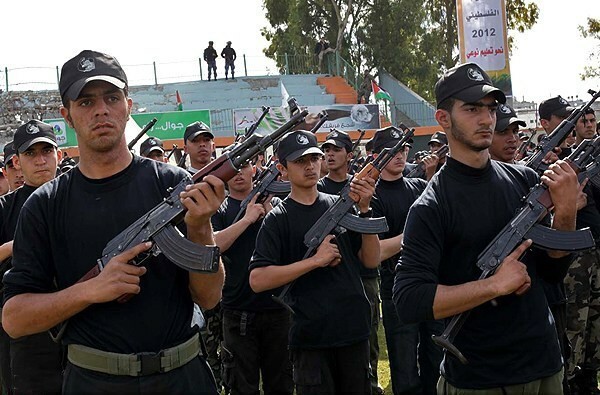
This fits well with the pure evil of secular apocalyptic cults, which we have witnessed throughout the 20th century. Reducing politics to violence and terror, “propaganda of act” through unspeakable atrocities that push the boundaries of what people consider possible are well-known from the theory and practice of other totalitarian movements.
October 7 was another horrible reminder that very little is new under the bloody sun.
A previous version of this article was published in 360 Review.
Table of Contents
Ivan Jankovic, PhD, is an Assistant Professor of Economics at the University of Mary. He earned a BA in Philosophy at the University of Belgrade, Serbia, and a PhD in Political Economy at Simon Fraser University. Jankovic’s writings focus on free-market economics, political theory, and American history and culture. His articles have appeared in many prestigious economic and political journals, including the American Journal of Economics and Sociology, Journal des Économistes et des Études Humaines, and American Political Thought. In January 2019, Jankovic’s book, The American Counter-Revolution in Favor of Liberty: How Americans Resisted Modern State, 1765-1850, was published by Palgrave Macmillan..
Follow NER on Twitter
- Like
- Digg
- Del
- Tumblr
- VKontakte
- Buffer
- Love This
- Odnoklassniki
- Meneame
- Blogger
- Amazon
- Yahoo Mail
- Gmail
- AOL
- Newsvine
- HackerNews
- Evernote
- MySpace
- Mail.ru
- Viadeo
- Line
- Comments
- Yummly
- SMS
- Viber
- Telegram
- Subscribe
- Skype
- Facebook Messenger
- Kakao
- LiveJournal
- Yammer
- Edgar
- Fintel
- Mix
- Instapaper
- Copy Link








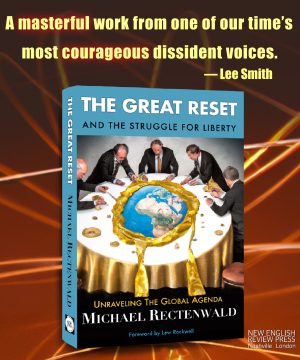
6 Responses
I appreciate this article a lot and the author has some good info. Good, but not new. This has been a subject of debate since 2001. It’s nice and easy to blame the west (again) for the scourge of Islam, but it just ain’t true. There were times when we added to the problem, but the truth is Muhammad and Islamic doctrine are the cause of the violence in Islam.
If Islam wasn’t inherently violent, the Islamic world wouldn’t have found favor with Hitler. Hitler himself admired Islam due to its violence, and criticized the “flabiness” of Christianity. That Hitler admired the violence in Islam, proves it was violent before Hitler came to the Grand Mufti’s table.
The Muslim Brotherhood and Hamas both have violent charters that call for the destruction of Israel and death to the Jews…but they took that directly from the doctrine. Muhammad also called for the deaths of Jews and conquered lands where Jews (and Christians) lived.
Maybe this is a good argument for liberals, since they can blame the west for the problem or terrorism, kind of absolving Muslims for Islamic violence…but it just isn’t true..
The article overlooks the major Muslim power of the 18th and early 19th century – the Ottoman Empire – which called for jihad against its ‘enemies’ during this period. These calls found ready ‘martyrs’, jihadis, ghazis, call them what you will, across the Muslim world, notably (outside of Turkey) Pakistan. This was before the rise of Hitler and the Russian revolution of 1917.
I have sympathy with the assertion Western totalitarian ideas impacted certain individuals and movements in the Muslim world but the influence was not one way. Hitler and the Nazis were great admirers of the Three Pashas responsible for the genocides and ethnic cleansing of what is now Turkey before they took that state into the First World War.
The violence and discrimination of jihad is not a Western import and, indeed, had an impression on the Nazis themselves. Such ideologies impact on each other and opportunists adopt what they can make use of. To absolve the Islamist movements mentioned of responsibility for the origins of the violent ideologies of today seems like a form Orientalism in reverse (or should I say Occidentalism?) and somewhat patronises cultures outside of the Western tradition.
This author would also blame Israel for the violence of Hamas and the rest of the Muslim world, I’d venture to say.
He really ought to study earlier islamic history, since Muhammad’s followers have been killing, beheading, raping, torturing and conquering since Muhammad made his way to Medina.
“When Islam gets its Enlightenment-Reformation, radicalism will give way to liberty and tolerance.”
That’s their problem, as is made more obvious when some commenters make it explicit. Islam will follow the path of Christianity.
That is to say it will become meaningless and irrelevant and defenceless in the societies that it once defined, and will eventually fade into trivia. Probably faster, at the pace of modern life, where it took Christianity a couple of centuries.
I think of the Islamists as enemies, but they are right about that much.
Great article if you know nothing at all about Islamic doctrine (so ignore it).
Whilst it is correct that Islamists were influenced by Western totalitarianism, the author is himself ‘seriously misguided’ in his claims about Islam. A quote from a book about the history of Islam:
“In April 627, following what became known as the Battle of the Ditch, Muhammed captured the stronghold of the Jewish tribe of Korayza, after a siege lasting twenty-five days. The Jews offered to depart on the same conditions as the Nadhir tribe, but Muhammed refused. Their lives would be spared, he said, if they accepted Islam. Only one Jew agreed.
In order to mitigate Muhammed’s culpability in the atrocity that followed, tradition relates that the fate of the people was left by the Prophet to be decided by Saad ibn Muad… Saad decided that the men of the Korayza should be slain, the women and children sold as slaves, and their palm-groves and other property distributed in the usual manner.
In spite of protests by some Arabs against the harsh decision, Muhammed commended it as a judgement inspired by Allah from the seventh heaven. The Koran (33:26) refers to this incident..
A trench was dug in the market place and in Muhammed’s presence more than eight hundred captives with their hands tied behind them were led to the brink in groups of five and there beheaded; their bodies were then pushed into the trench. This ghastly massacre – which even a writer sympathetic to Islam has described as impossible to dissociate from thew Nazi atrocities – went on all through the day and continued by torchlight into the night…
The lands, chattels, weapons and cattle of the Korayza were apportioned as booty among the Muslims. After making certain presents of concubines and slaves to his friends, Muhammed kept a concubine for himself…
Muhammed sold the remaining women and children, about thirteen hundred in all, to the neighbouring tribes…”
From ‘Foundations of Islam’ by Benjamin Walker, p185